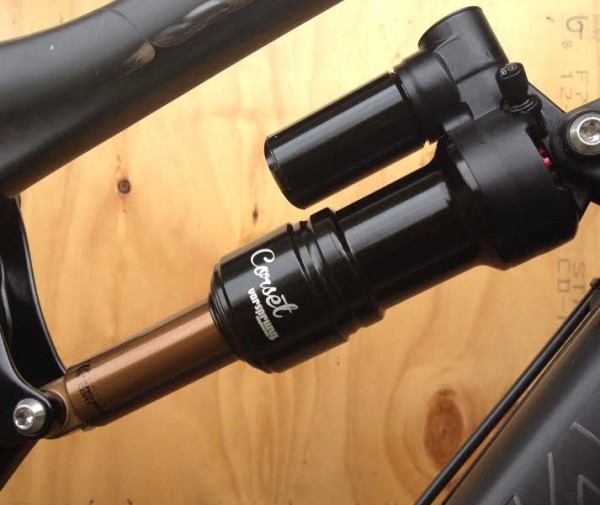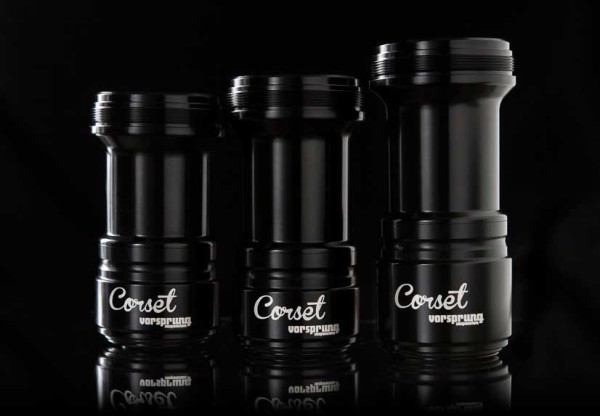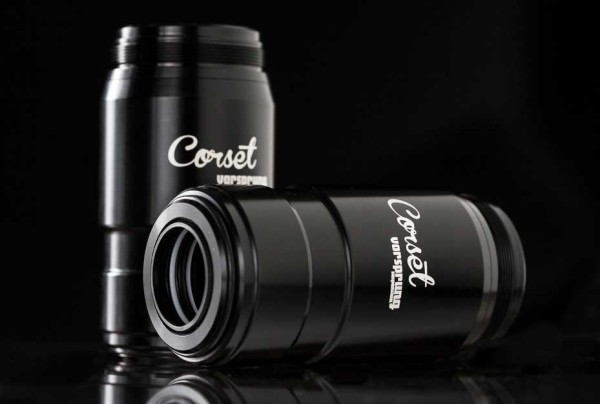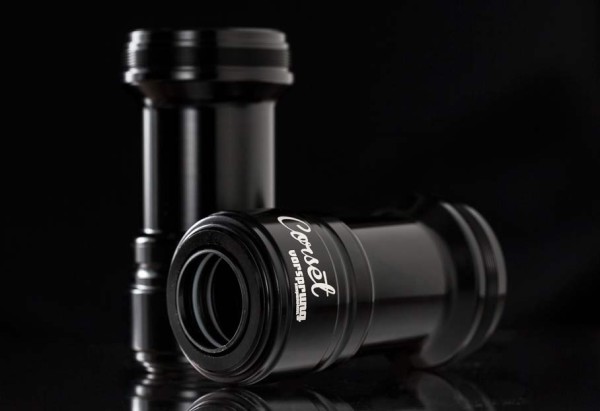If we learning anything from our Suspension Setup Series last year, it’s that tinkering is good and that more tinkering can be even better. Once you move beyond the basics of air pressure and knob fiddling, there’s air volume adjustments.
We’ve upgraded our own shocks in both directions, using volume spacers to reduce it to help the rear end keep up with a bigger-than-stock fork, and adding an oversized can to improve overall “bouyancy” to an otherwise firm XC bike. The latter is exactly what the new Vorsprung Corset air sleeve upgrades are offering for Fox Shocks. Available for a wide range of models and sizes, they increase the air volume, which gives the shocks a bit less resistance to initial movement and a cushier mid stroke. The result should be more supple performance on the small stuff and smoother action throughout the middle of its movement…
The Corset has been in development for two years, tested throughout Whistler’s amazingly diverse bike park and surrounding trails as well as on the EWS (Enduro World Series) races. It’s made in Canada and retails for $150 CAD.
Full Specs (from Vorsprung) are:
What the Corset offers:
– Less initial resistance means better traction and small bump compliance
– More mid-stroke support
– Feels more like a coil shock
– Livelier, more predictable feel
– Better big-hit control
– No more preloaded initial feel
– No more wallowy midstroke
– Adjustable ending-stroke ramp using volume spacers (sold separately)
– Compatible with standard Fox air sleeve seals
– Easy to install – kit includes air shaft seals
Model Compatibility:
Fox Float R, RP, RP2, RP23, RP3, Triad (all years)
Fox Float CTD (Large Volume and Small Volume eyelet types)
Fox Float X
Fox DHX Air
Note: not currently available to suit DRCV shocks. If demand is there, we’ll make them!
Sizes Available:
7.50 x 1.75
7.50 x 2.00
7.875 x 2.00
7.875 x 2.25
8.50 x 2.125 (Specialized Enduro)
8.50 x 2.50
Vorsprung’s based in Whistler and offers suspension tuning services as well as other aftermarket hop-up kits and parts. Check out their blog for a more technical description of their effect on spring rates/curves, too.



